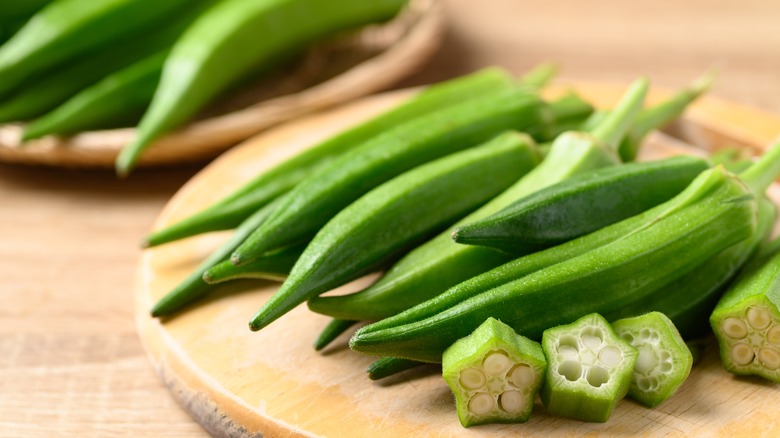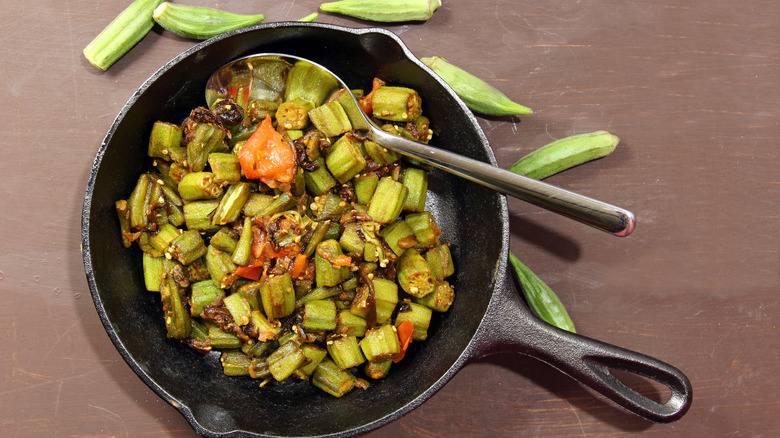What To Look For When Buying The Freshest Okra At The Grocery Store
Okra is a classic ingredient in Southern soul food, whether you're going to serve it battered and pan fried as a side dish, pickled, or thrown into something like our shrimp and okra gumbo recipe. A bite through its thick, tender, almost velvety skin releases a delightful pop of crunchy yet juicy seeds. Perfectly cooked okra starts with choosing the freshest pods at the grocery store.
There are a few visual cues to look for when you peruse the mounds of raw okra in the vegetable section. A good rule of thumb for choosing most vegetables is to look for the most vibrant colors. For okra, the skin should be bright green with no brown spots, bruises, or dull discoloration. Size is another important factor in determining the best texture and flavor when cooked. While you might think bigger is better, the opposite is true. Okra should be a maximum of four inches long. Smaller okra are younger, offering more tender, supple skin while larger and longer okra are older and more fibrous, resulting in tough, stringy skin.
After eyeballing okra for color and size, you can then try a tactile test for the final assessment of freshness. When you handle okra, the pods should be crisp and springy, not soft or floppy. Another indication of its freshness is if you can hear a seed snap when you squeeze okra tightly.
Tips for cooking okra
Okra is a versatile vegetable that lends itself well to sautees, stews, deep-frying, searing, and roasting. However, different cooking methods provoke different textures. Similar to Mexican nopal, okra emits a slimy gel known as mucilage when you cut and cook it. While mucilage is a veritable nutrient powerhouse, it's also one of the primary textural complaints from okra naysayers.
If you want to rid okra of its slime, you can try soaking it in a vinegar and water solution before chopping it up and sauteing. However, the method of cooking you choose has a much more profound effect on mucilage, with wet cooking methods increasing and dry methods decreasing the amount of gel released. That said, if you use okra in a boiled stew, the surplus of mucilage works to your advantage by thickening the broth. Consequently, okra is an integral ingredient in authentic gumbo recipes.
When using a dry cooking method like sauteing, searing, or roasting, make sure not to crowd the pan. Crowding will also result in more slime while letting air circulate between each pod will help eliminate it. High heat methods like searing, frying, or roasting will help dry out mucilage, as will cooking the pods whole. Adding acidic ingredients like tomato, citrus, and vinegar to sliced okra will mitigate sliminess. You could thus add a splash of lemon juice or canned crushed tomatoes to the saute pan, using a vibrant spice mixture like creole seasoning or curry to complement the acidity.

